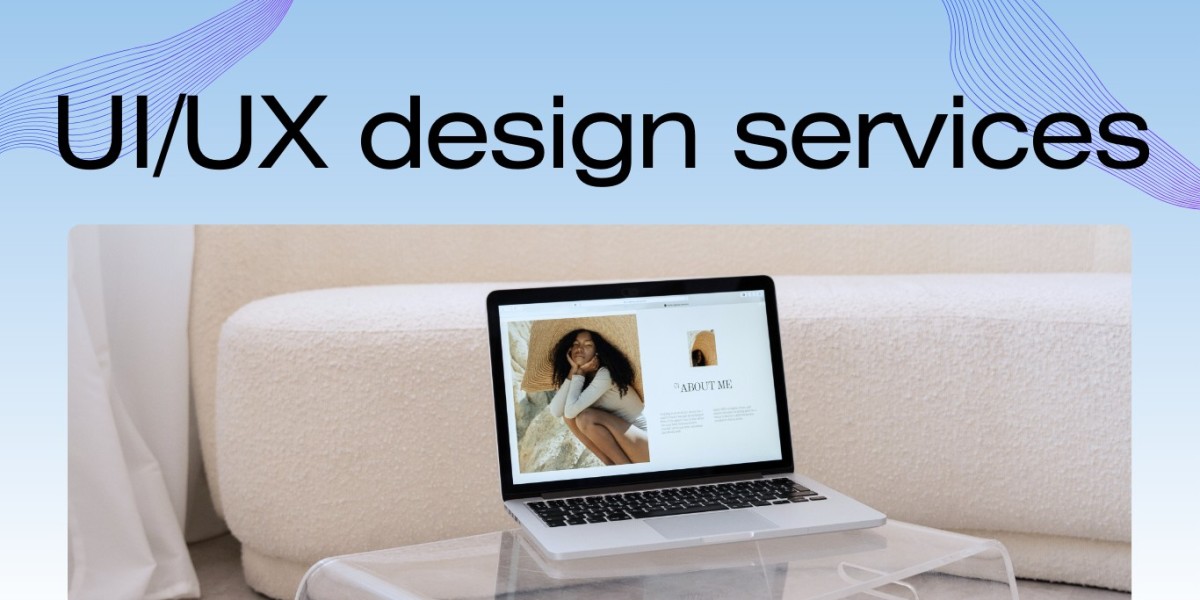In the current digital environment, a product's success is largely determined by its user interface (UI) and user experience (UX) design. Engagement, retention, and conversion rates are greatly impacted by how users interact with digital platforms, whether they be mobile apps, websites, or business software. Purchasing expert UI/UX design services guarantees that companies provide their audience with smooth, user-friendly, and aesthetically pleasing experiences.
This blog explores the key benefits of expert UI/UX design services, showcasing how businesses can gain a competitive edge, enhance customer satisfaction, and drive revenue growth.
1. Enhanced User Engagement and Retention
One of the most immediate benefits of expert UI/UX design is improved user engagement. A well-structured and visually appealing interface encourages users to interact with the platform, while intuitive navigation ensures they find what they need without frustration. When users can easily access information, perform desired actions, and enjoy a smooth digital experience, they are more likely to stay engaged and return.
AI in UI/UX for Engagement
AI-powered personalization engines, such as Adobe Sensei, analyze user behavior and dynamically adjust UI elements to enhance engagement. Personalized content recommendations and adaptive interfaces ensure that users remain engaged and satisfied.
Additionally, AI-driven chatbots and recommendation engines can further elevate engagement levels. For instance, Netflix’s AI-powered recommendation system curates content based on viewing history, ensuring users stay on the platform longer. Similarly, eCommerce websites use AI-driven product recommendations to keep users engaged and encourage repeat visits.
2. Improved Usability and Accessibility
Accessibility is a fundamental component of modern UI/UX design. A well-designed interface accommodates users of all abilities, ensuring compliance with accessibility standards like WCAG (Web Content Accessibility Guidelines). Prioritizing accessibility expands the user base and prevents businesses from alienating potential customers.
AI in Accessibility
Microsoft's AI for Accessibility utilizes machine learning to improve usability, offering features like speech-to-text, text-to-speech, and real-time captions, ensuring a seamless experience for users with disabilities. Features such as voice commands, high-contrast interfaces, and screen reader compatibility help improve accessibility and inclusivity.
For example, Apple's VoiceOver technology allows visually impaired users to navigate iOS devices effectively, demonstrating how well-integrated accessibility features enhance user experience for a wider audience.
3. Higher Conversion Rates and Business Growth
A frictionless user experience translates directly into higher conversion rates. Whether it's an eCommerce checkout process, a lead generation form, or a subscription-based service, well-optimized UI/UX reduces drop-offs and increases user actions. A streamlined design ensures that users can easily navigate the sales funnel, reducing barriers to conversion.
AI in Conversion Optimization
Google Optimize, an AI-driven A/B testing tool, helps businesses refine UI/UX elements by analyzing user behavior and suggesting design improvements that lead to better conversion rates. By continuously testing different variations of landing pages, color schemes, call-to-action buttons, and page layouts, businesses can fine-tune their designs for optimal performance.
Amazon’s one-click purchasing and intuitive UI design exemplify how user-friendly interfaces directly contribute to increased conversions and customer satisfaction.
4. Stronger Brand Identity and Credibility
Consistent UI/UX design enhances brand perception and builds trust. A visually cohesive and user-friendly interface reflects professionalism and reliability, making users more likely to trust the brand. Well-designed interfaces create lasting impressions and ensure that customers associate the brand with a positive experience.
AI in Brand Enhancement
Canvas AI Design Suggestions leverage machine learning to provide design consistency and branding recommendations, helping businesses maintain a strong digital presence. AI-driven design tools help businesses maintain a uniform look across digital platforms, ensuring brand consistency.
For instance, brands like Apple and Google have successfully implemented consistent UI/UX design principles, reinforcing their identities and ensuring seamless user experiences across devices and platforms.
5. Reduced Development Costs and Time
Investing in UI/UX design at the early stages of development prevents costly revisions and redesigns. A well-planned UI/UX strategy minimizes errors, reduces development time, and ensures efficient resource allocation. Addressing design flaws early reduces the need for extensive modifications, saving both time and money.
AI in UI/UX Prototyping
Figma's AI-powered Auto Layout streamlines the design process, allowing teams to create responsive interfaces efficiently while reducing manual adjustments and iterations. AI-powered prototyping tools like Sketch and InVision allow designers to rapidly test and iterate designs before full-scale development, saving time and resources.
Companies like Airbnb have leveraged AI-powered design tools to prototype and test interfaces quickly, accelerating development cycles and reducing overhead costs.
6. Increased Customer Satisfaction and Loyalty
A smooth and enjoyable user experience fosters customer satisfaction and long-term loyalty. Satisfied users are more likely to return, recommend the platform, and engage with the brand consistently. Investing in UI/UX design translates to better customer relationships and improved customer lifetime value (CLV).
AI in Customer Experience
Chatbots like Drift and Intercom, powered by AI, provide real-time assistance, reducing friction and enhancing user satisfaction through instant support. AI-driven customer support solutions analyze user queries and provide accurate responses, ensuring a seamless customer experience.
For example, Sephora's AI-driven chatbot assists customers in selecting products based on preferences and previous purchases, enhancing customer satisfaction and boosting sales.
7. Competitive Advantage in the Market
In a saturated market, businesses with superior UI/UX design gain a significant competitive edge. A seamless, aesthetically pleasing, and functional digital experience differentiates a brand from its competitors. Companies that prioritize UI/UX can outshine competitors and position themselves as industry leaders.
AI in Competitive Analysis
IBM Watson Analytics leverages AI to analyze competitors' UI/UX strategies, providing insights that help businesses refine their design approach and outperform industry rivals. AI-powered tools help businesses analyze user feedback, detect usability issues, and optimize interfaces to stay ahead of competitors.
For example, Tesla’s intuitive UI design in its vehicles sets it apart from competitors, creating a superior in-car experience and reinforcing its brand dominance.
Conclusion
Expert UI/UX design services are no longer optional; they are a necessity for businesses aiming to thrive in the digital age. From enhancing engagement and accessibility to increasing conversions and brand credibility, investing in a professional UI/UX strategy yields long-term benefits. For an e-commerce development company, a well-crafted UI/UX design ensures seamless navigation, improved user satisfaction, and higher sales. By integrating AI-driven solutions, businesses can further optimize their digital experiences and stay ahead of the competition.
A well-executed UI/UX design strategy not only improves usability and customer satisfaction but also drives revenue growth and business success. Companies that prioritize UI/UX will continue to lead the digital landscape, fostering customer trust, loyalty, and market competitiveness.









